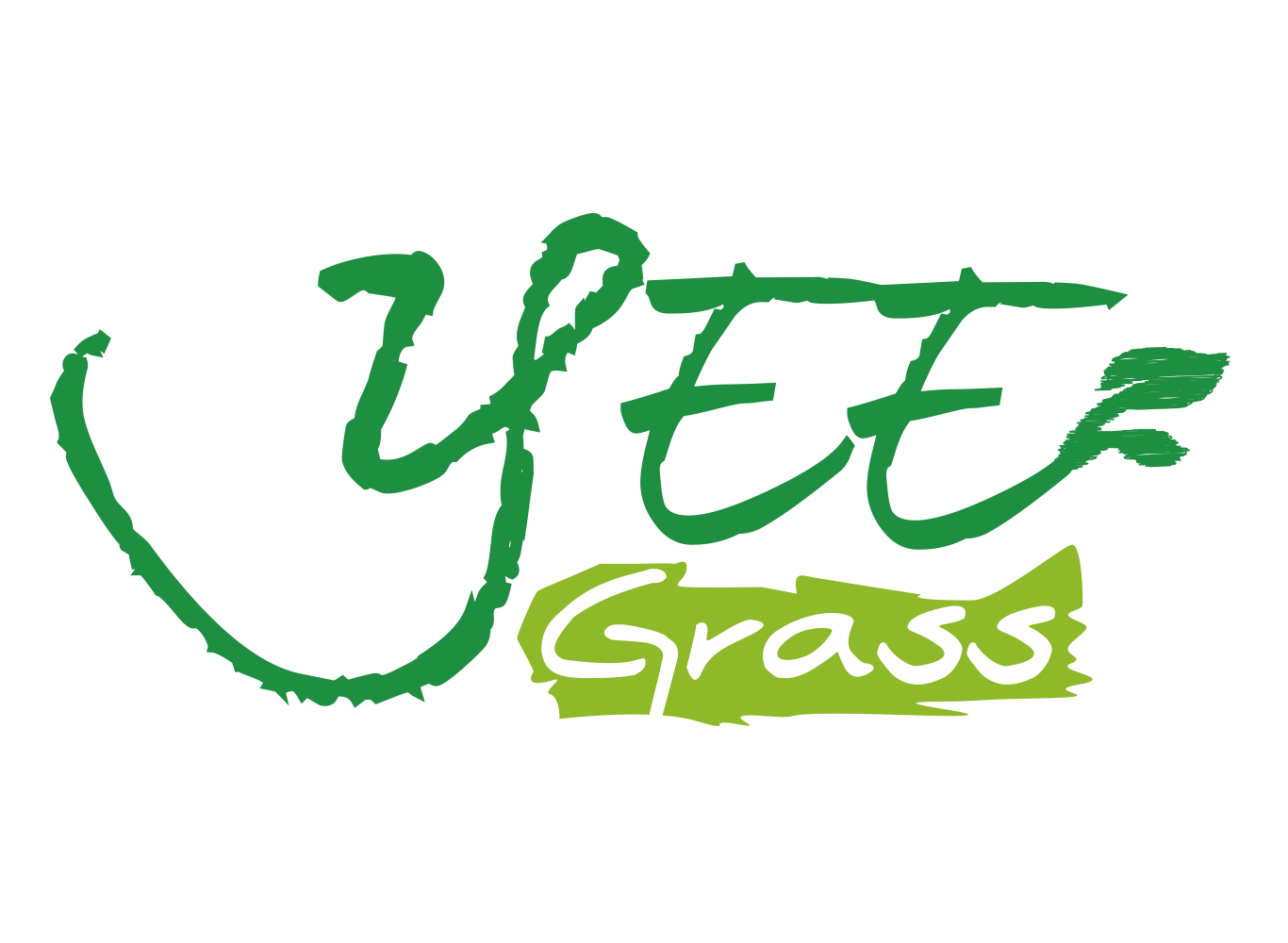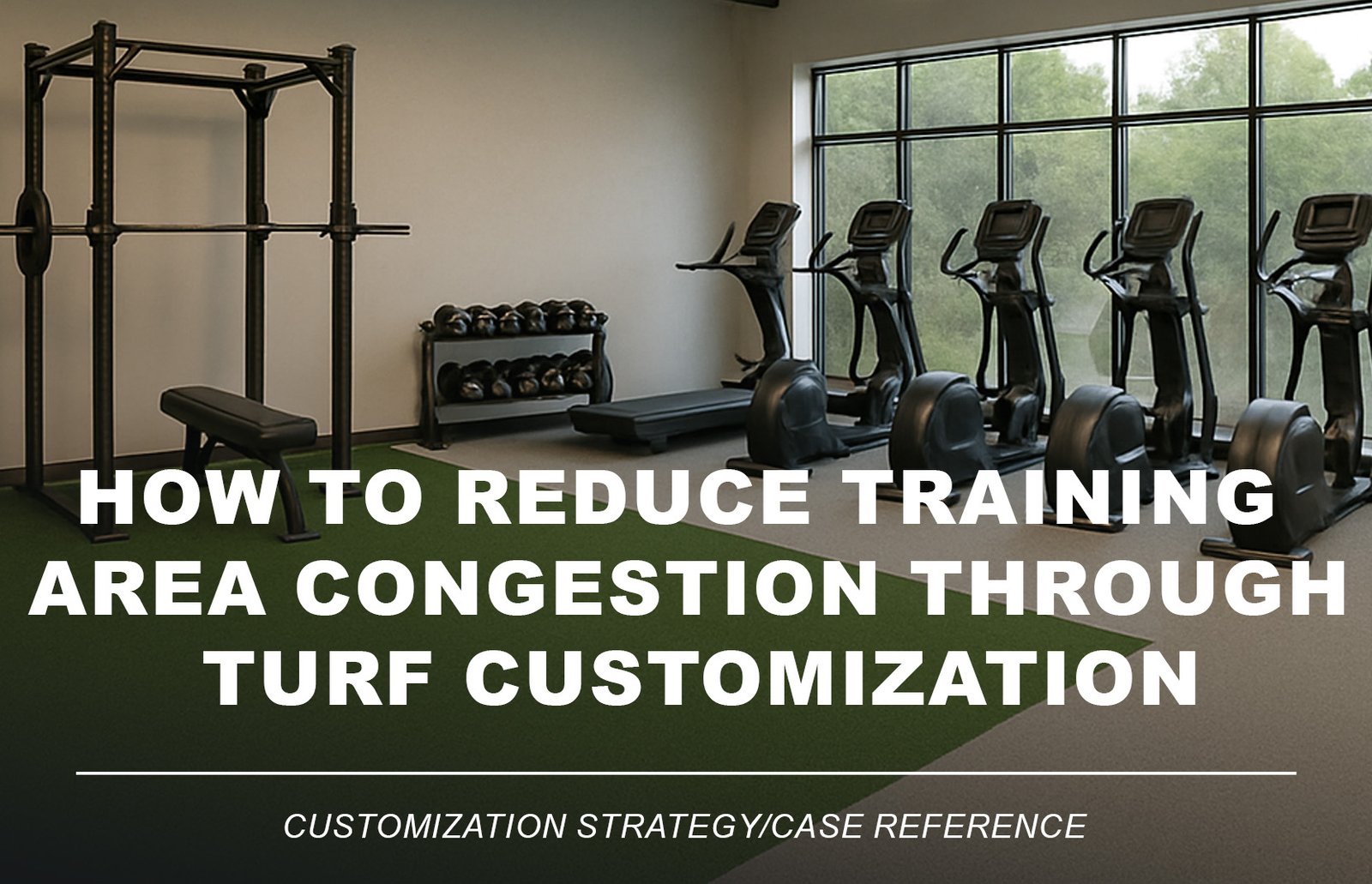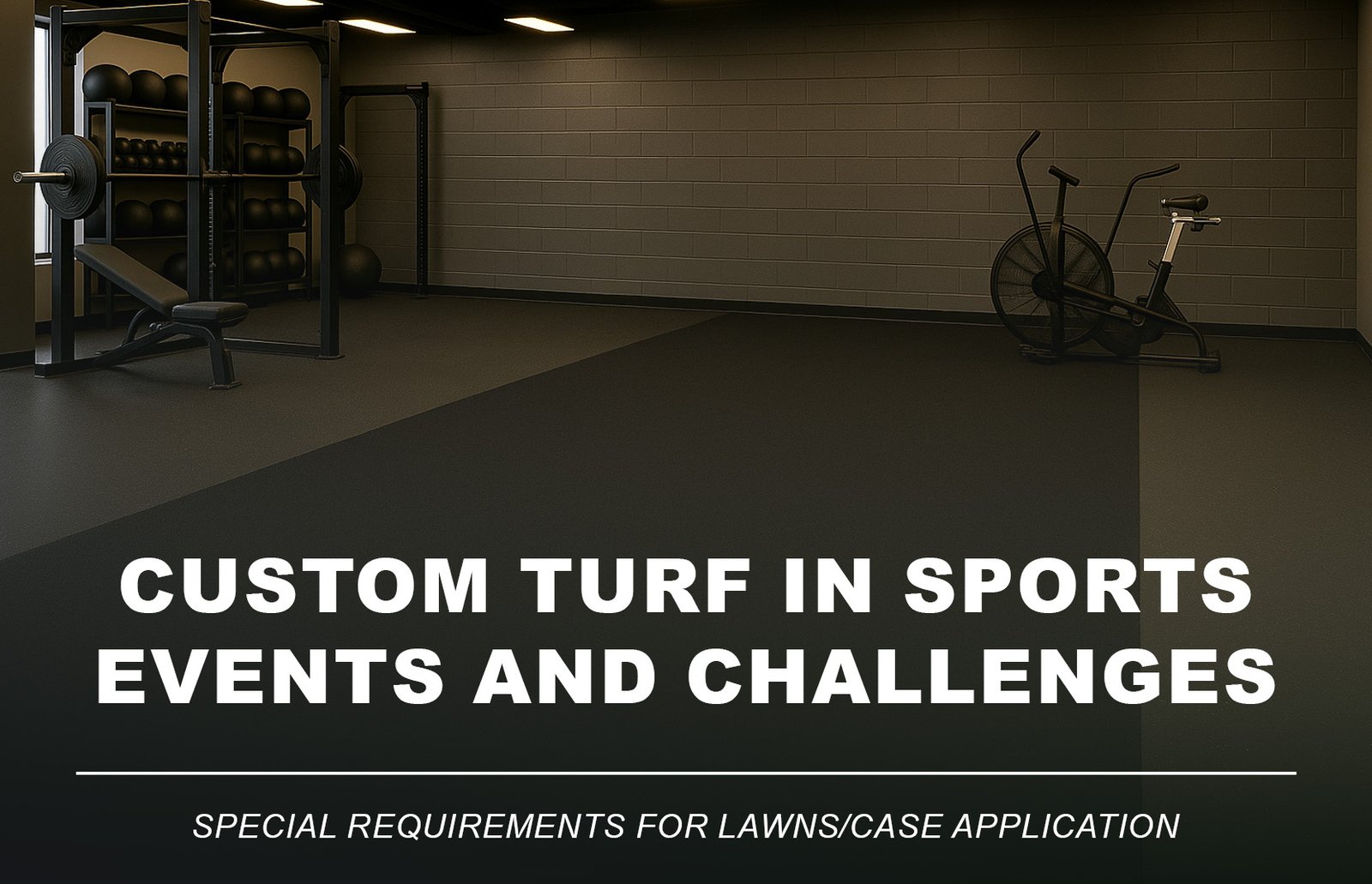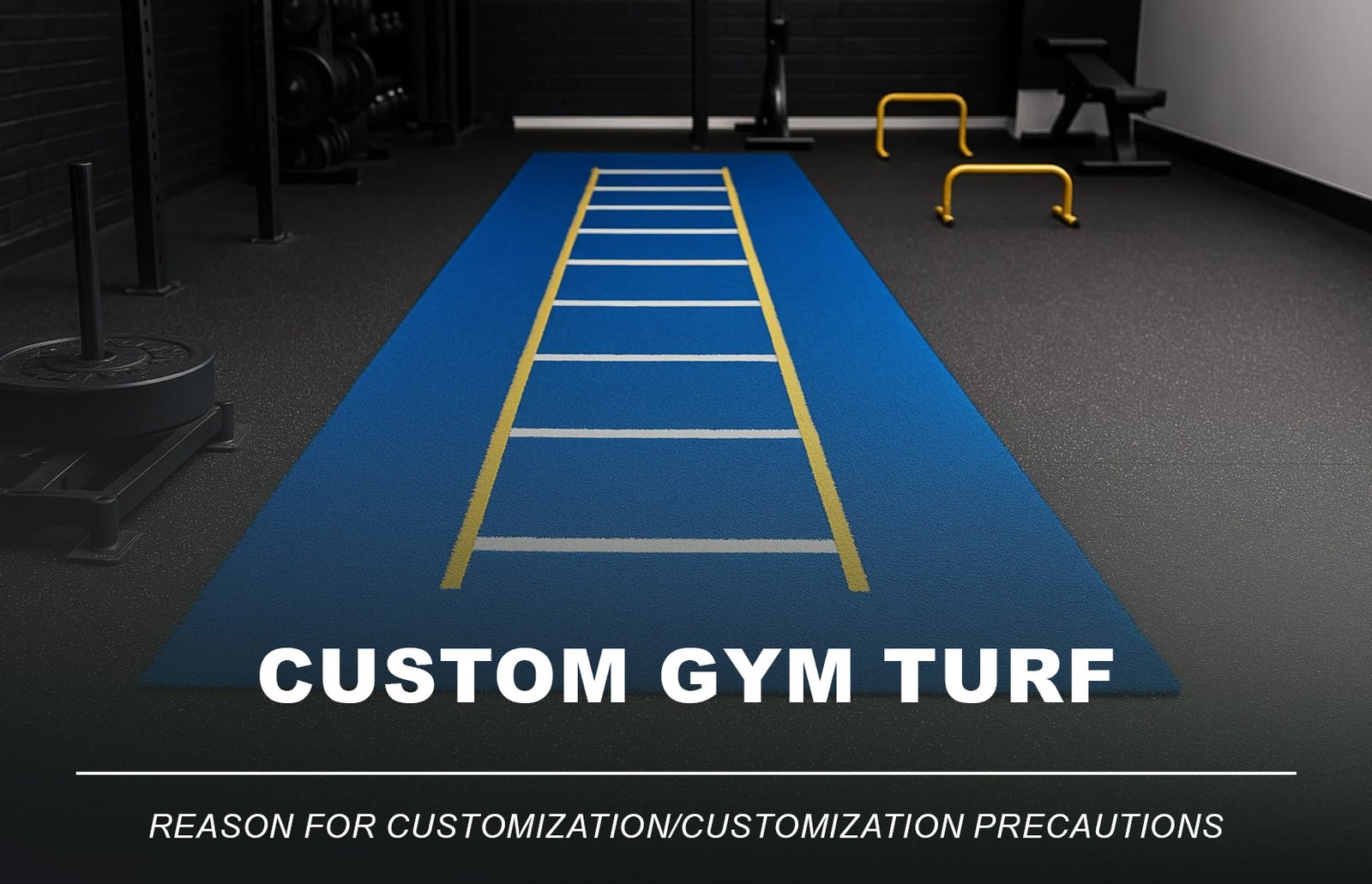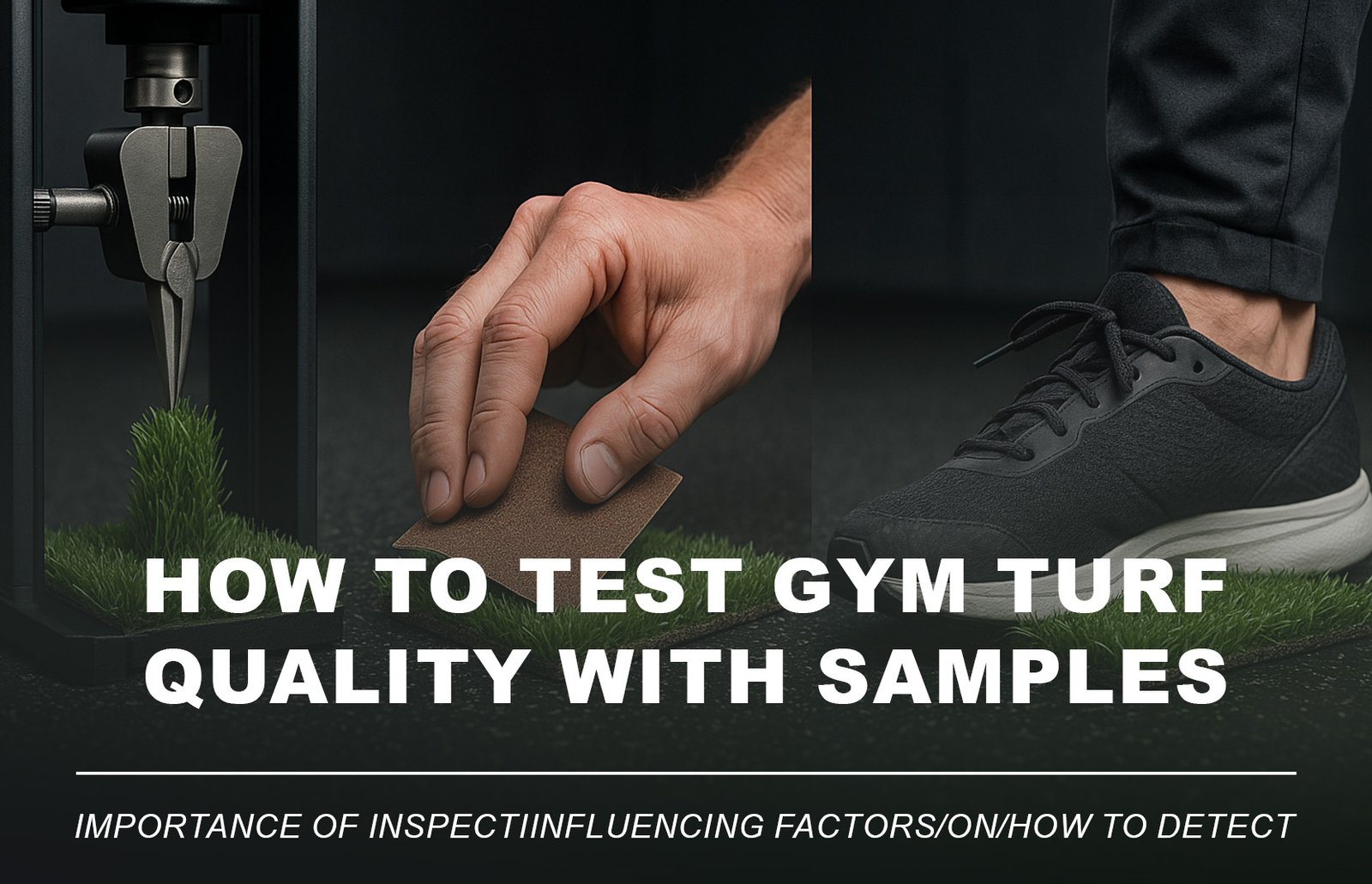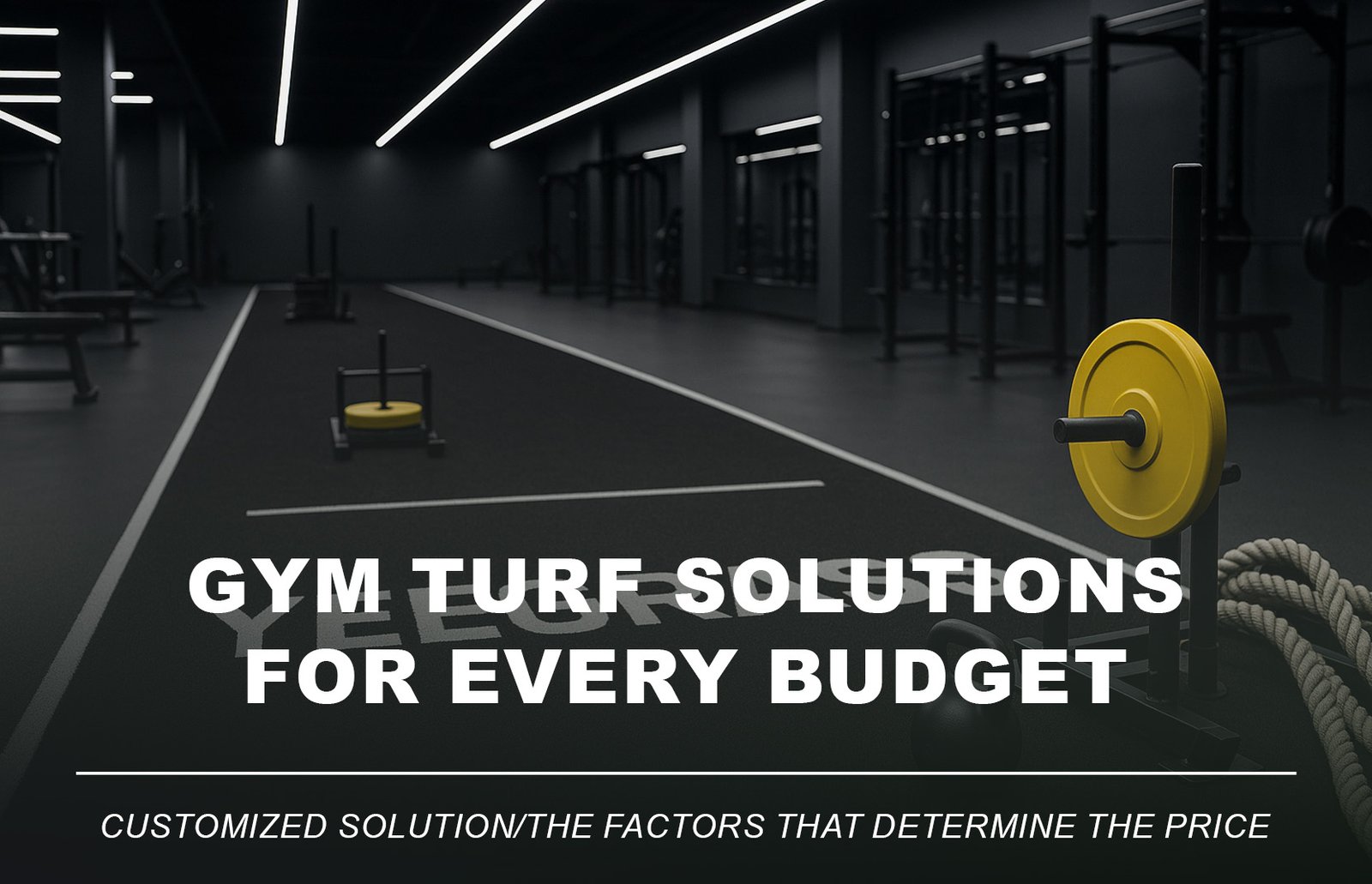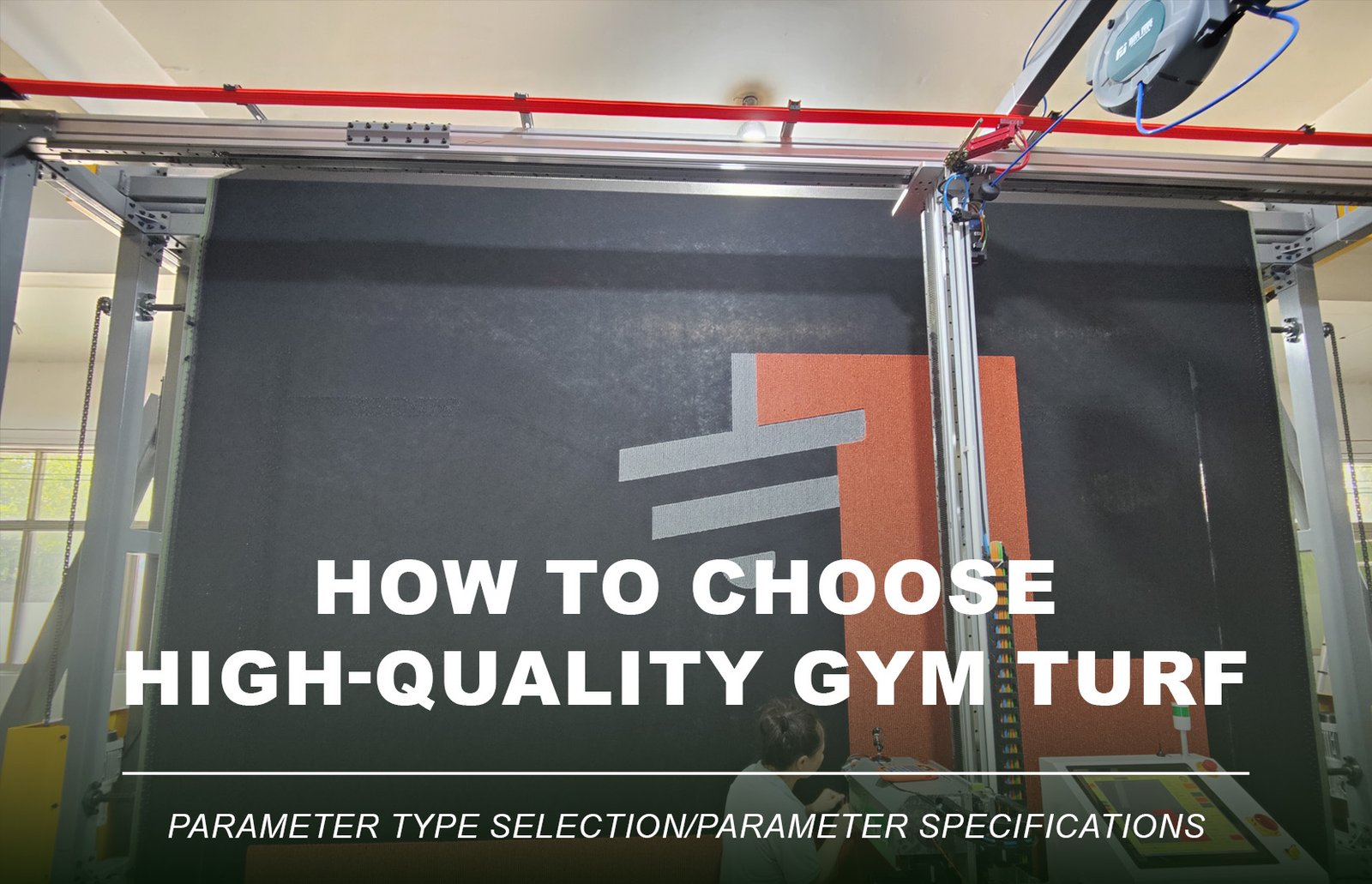
1. Introduction: Why Congestion Is a Hidden Threat in Gyms
Many gym owners face the same problem: the facility’s size seems sufficient, but during peak hours, members feel cramped and restricted.
This sense of congestion not only affects workout quality but can also cause safety concerns and lead to membership drop-offs. Beyond physical expansion, floor layout and visual zoning are crucial for improving flow and space perception.
Custom artificial turf—with its visual zoning and functional guidance—has become an effective solution to optimize traffic flow and reduce congestion in training areas.




2. How Turf Customization Improves Spatial Perception
(1) Visual Zoning
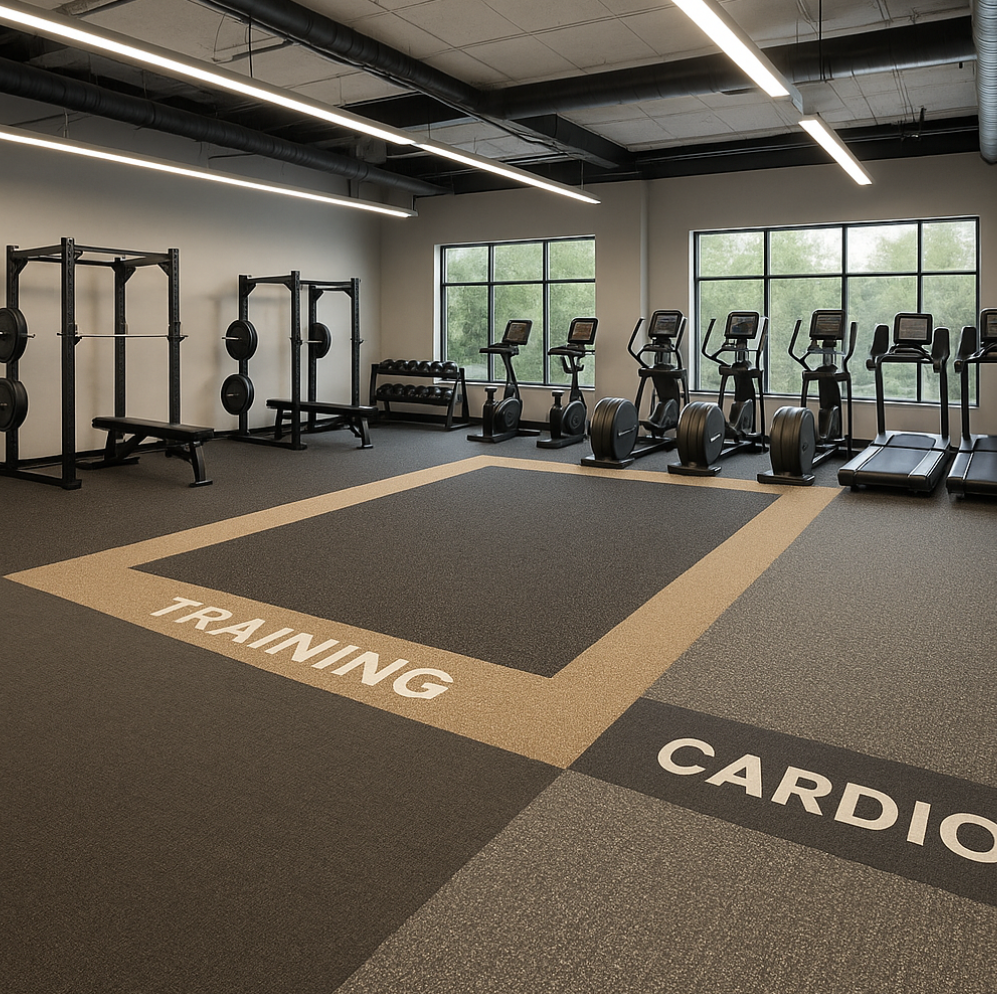
Using different colors, textures, and patterns, turf can divide an open floor into distinct functional areas, helping members instantly understand space usage.
(2)Functional Guidance

Custom measurement lines, directional arrows, and markings guide movement and training flow, reducing overlap and crowding in the same area.
(3)Psychological Perception

Clear visual boundaries create a sense of openness, making the facility feel less crowded and more organized.
3. Common Turf Customization Strategies
(1)Color Zoning

- Assign different colors to cardio, strength, and functional training zones.
- Integrate brand colors to reinforce identity while maintaining aesthetic balance.
(2)Markings & Measurement Lines

- Directional arrows: Guide members toward equipment or training lanes.
- Functional measurements: Sled lanes, agility ladders, sprint tracks—reducing confusion and ad-hoc space use.
(3)Logo & Graphic Placement

Embed logos or graphic symbols directly into the turf to clearly define the zone’s purpose.
(4)Texture Variation

- High-friction zones for stability-focused activities like weightlifting.
- Smoother zones for speed and agility training.
4. Case Studies

Case 1: Dual-Color Turf for Functional vs. Cardio Zones
Dark green turf for functional training and light gray for cardio created natural separation and reduced equipment interference.

Case 2: CrossFit Facility with Custom Sled Lane Markings
Precision lines and directional arrows increased training efficiency and reduced lane-sharing conflicts.

Case 3: HYROX Event Venue with Brand Color Zoning
Branded color turf combined with large logos helped athletes quickly identify zones during competition while enhancing visual appeal for broadcasts.
5. Steps to Implement Turf Customization for Reducing Congestion
- Analyze Member Flow – Identify high-traffic zones during peak hours.
- Plan the Layout – Define functional area proportions and placement.
- Design the Turf – Select colors, textures, markings, and logo positions.
- Install & Test – Ensure both visual effectiveness and workout comfort.
6. Long-Term Benefits & Added Value
- Higher Member Satisfaction & Retention – A more comfortable, organized environment encourages consistent attendance.
- Stronger Brand Identity – Custom turf design makes your gym visually distinctive.
- Better Space Utilization – Reduced waiting times and fewer conflicts in shared zones.
7. Conclusion & Recommendations
Turf customization is not just about aesthetics—it’s a strategic tool for space management.
Through smart color zoning, functional markings, and visual guidance, you can significantly reduce congestion in training areas, keeping your gym organized and efficient even during peak times.
